
Kód: 15592777
Lyme borreliosis. An emerging or re-emerging disease?
Autor Tommy Gong
Facharbeit (Schule) aus dem Jahr 2016 im Fachbereich Biologie - Krankheiten, Gesundheit, Ernährung, , Sprache: Deutsch, Abstract: Diseases are lethal abnormal conditions of the body which stops it from functioning completely or pa ... celý popis
- Jazyk:
 Nemčina
Nemčina - Väzba: Brožovaná
- Počet strán: 28
Nakladateľ: Grin Publishing, 2016
- Viac informácií o knihe

Mohlo by sa vám tiež páčiť
-

Molekülspektroskopie
87.07 € -

Cry of Innocence
11.55 € -

Lechenie Yazvennoy Bolezni
109.90 € -

MATLAB Programming with Applications for Engineers
142.68 € -

TRAPPED IN IRAN 5D
39.11 € -

Flutter-Byes in My Hair
18.39 € -

Life-Inspiring Poems
36.89 €
Darujte túto knihu ešte dnes
- Objednajte knihu a vyberte Zaslať ako darček.
- Obratom obdržíte darovací poukaz na knihu, ktorý môžete ihneď odovzdať obdarovanému.
- Knihu zašleme na adresu obdarovaného, o nič sa nestaráte.
Viac informácií o knihe Lyme borreliosis. An emerging or re-emerging disease?
Nákupom získate 107 bodov
 Anotácia knihy
Anotácia knihy
Facharbeit (Schule) aus dem Jahr 2016 im Fachbereich Biologie - Krankheiten, Gesundheit, Ernährung, , Sprache: Deutsch, Abstract: Diseases are lethal abnormal conditions of the body which stops it from functioning completely or partially. Diseases are separated into two different categories, infectious disease and non-infectious disease. Infectious diseases are diseases that can be transferred to another person through methods of direct or indirect contact. Non infectious diseases, on the other hand, cannot be transferred and can be due to lifestyle and environmental factors or genetics. Emerging infectious diseases refers to a pathogenic disease that arose recently in a population for the first time. Re-emerging infectious diseases, however, are diseases that were once a major health problem but has declined due to reasons such as cures being developed. But the pathogen that caused the disease has rearose in a different form that is immune to its original cure. Pathogens are biological agents that infects its hosts and causes disruption of its normal physiology through diseases. Pathogens are separated into different categories such as bacteria, viruses, fungi, protozoa, prions and macro parasites. Each of these different types of pathogens have their own ways of transmission, infection, survival in the host and reproduce. In order for a pathogen to be successful, it needs to avoid the host's immune system long enough to infect a new host. There are many ways pathogens are transmitted amongst humans such as skin contact, contact of bodily fluids, airborne transmission and vector-borne transmission. Pathogen transmission is efficient and successful in high density populated areas as the pathogens can be easily transmitted from person to person. After pathogens have entered the human body, they begin to multiply. The immune system of the host will respond to the foreign organism by sending out white blood cells and antibodies which functions to rid the pathogens either by directly attacking it or using other mechanisms such as raising the body temperatures which helps rid the viruses as the body becomes a less favorable host. However, some pathogens are able to evade the immune system and continue to cause diseases. The focus of this research, Lyme disease is an example of this.
 Parametre knihy
Parametre knihy
Zaradenie knihy Knihy po nemecky Naturwissenschaften, Medizin, Informatik, Technik Biologie Biologie - Sonstiges
42.42 €
- Celý názov: Lyme borreliosis. An emerging or re-emerging disease?
- Autor: Tommy Gong
- Jazyk:
 Nemčina
Nemčina - Väzba: Brožovaná
- Počet strán: 28
- EAN: 9783668359444
- ISBN: 366835944X
- ID: 15592777
- Nakladateľ: Grin Publishing
- Hmotnosť: 55 g
- Rozmery: 210 × 148 × 1 mm
- Rok vydania: 2016
Obľúbené z iného súdka
-

Brain from Inside Out
41.12 € -

The current neuroscientific understanding of Parkinson?s Disease
54.59 € -
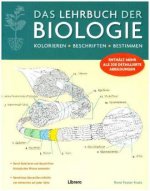
Das Lehrbuch der Biologie
15.88 € -

Diversity and Importance of Butterflies and Birds
48.46 € -

Marihuana Anbaugrundlagen
27.64 € -

Molecule Away from Madness - Tales of the Hijacked Brain
27.64 € -

On Growth and Form
19.10 € -

ALCIDE DESSALINES D'ORBIGNY (1802-1857)
23.82 € -4 % -

Parasitic Plants
168.82 € -

The Story Paradox
30.06 € -2 % -

Journey of the Mind
23.32 € -29 % -

Warum macht Sex Spaß?
15.98 € -

Auswirkungen der Troepfchenbewasserung auf Wachstum und Ertrag von Kartoffeln
55.70 € -

Sense of Self - Memory, the Brain, and Who We Are
28.95 € -9 % -

Der Fisch in uns
13.97 € -

Uprawa i profil ?ywieniowy boczniaka ostrygowatego
44.13 € -

Anti-bacterial activity of lactobacillus plantarum
68.07 € -

GENETYKA POPULACJI
41.92 € -

Embriologia
78.83 € -

Fresh figs (Ficus carica L.): physicochemical and nutritional quality, antioxidant activity.
55.60 € -

Melatonin and Diabetes
48.46 € -

Biologia komórkowa: Struktura, funkcja i sygnalizacja
102.66 € -

How the Mind Changed: A Human History of Our Evolving Brain
28.65 € -

L?institutionnalisation de la lutte moderne contre le paludisme
105.98 € -
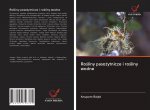
Ro?liny paso?ytnicze i ro?liny wodne
29.96 € -

Antibiotika- und Schwermetallresistenz von Escherichia Coli
60.32 € -

Diagnostic value of HIV, HBV, HCV RDT versus ELISA
50.07 € -

Jentomopatogennye griby, Beauveria bassiana i Metarhizium anisopliae
39.61 € -

Cinhona krasnaq (Cinchona Officinalis L.)
25.23 € -
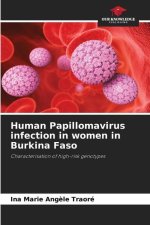
Human Papillomavirus infection in women in Burkina Faso
108.59 € -

Red cinchona (Cinchona Officinalis L.)
54.59 € -
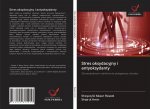
Stres oksydacyjny i antyoksydanty
41.92 € -
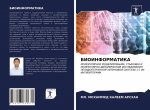
BIOINFORMATIKA
44.13 € -

Maclura pomifera : fitohimicheskaq i biologicheskaq harakteristika
44.13 € -

Retinopatia diabetica sotto BIOinformaticSCOPE
84.26 € -

Actinidia deliciosa: moschnyj istochnik metallicheskih nanochastic
29.75 € -

Funghi entomopatogeni, Beauveria bassiana e Metarhizium anisopliae
78.83 € -

The aquatic banana tree of Madagascar
44.13 € -

Dark and Magical Places - The Neuroscience of Navigation
27.74 € -10 % -
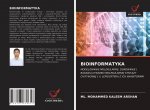
BIOINFORMATYKA
44.13 € -

Biodiversité des gastéropodes terrestres dans le Nord- Est- Algérien
48.46 € -

ACTIVITÉ ANTIBACTÉRIENNE DES HUILES ESSENTIELLES DE VIT CAMPUS ET DE SON QUAI
50.07 € -

Actinidia deliciosa: potente fonte di nanoparticelle metalliche
46.65 € -

Diet and pre-existing comorbidities are key drivers of the COVID delta virus infection
100.45 € -

Sea Monsters
20.10 € -

Vklad w izuchenie wariantow razwitiq wida Arbutus unedo L. w zapadnom Alzhire
31.97 € -
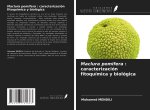
Maclura pomifera : caracterización fitoquímica y biológica
44.13 € -

Entomopathogene Pilze, Beauveria bassiana und Metarhizium anisopliae
78.83 € -

Swezhij inzhir (Ficus carica L.): fiziko-himicheskie i pischewye kachestwa i antioxidantnaq aktiwnost'.
26.34 €
Osobný odber Bratislava a 2642 dalších
Copyright ©2008-24 najlacnejsie-knihy.sk Všetky práva vyhradenéSúkromieCookies



 21 miliónov titulov
21 miliónov titulov Vrátenie do mesiaca
Vrátenie do mesiaca 02/210 210 99 (8-15.30h)
02/210 210 99 (8-15.30h)